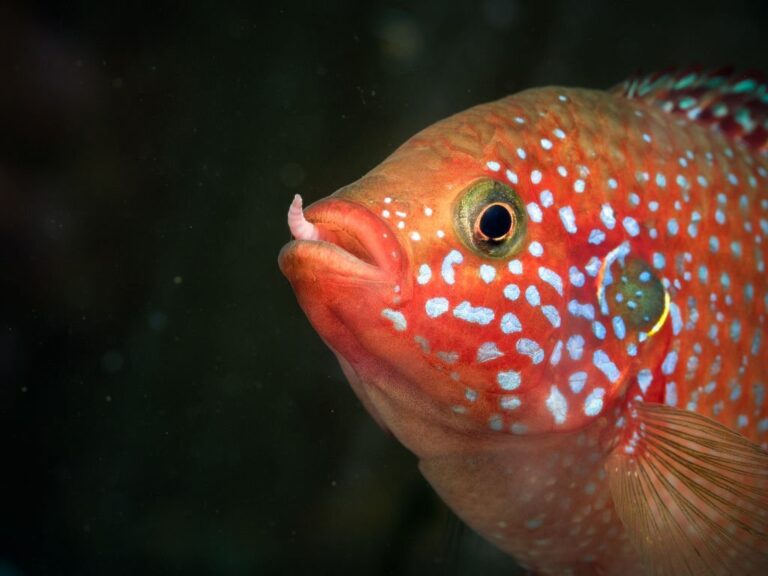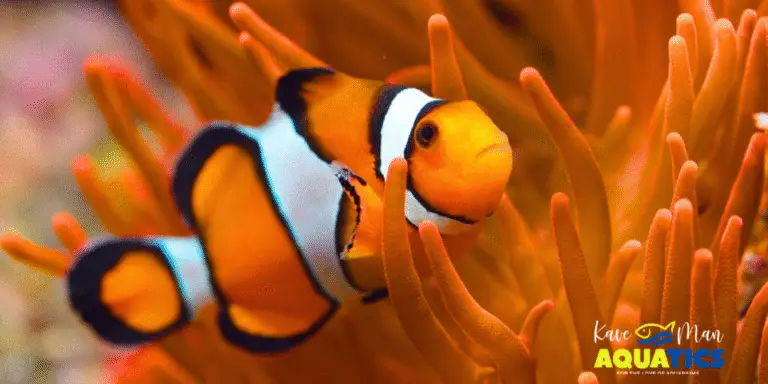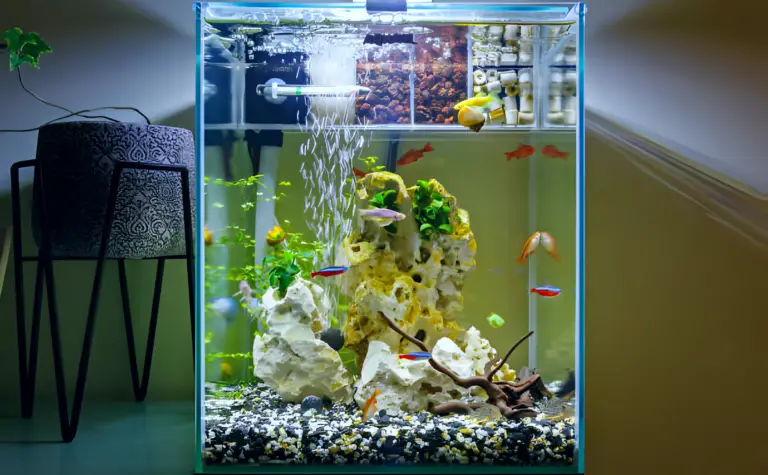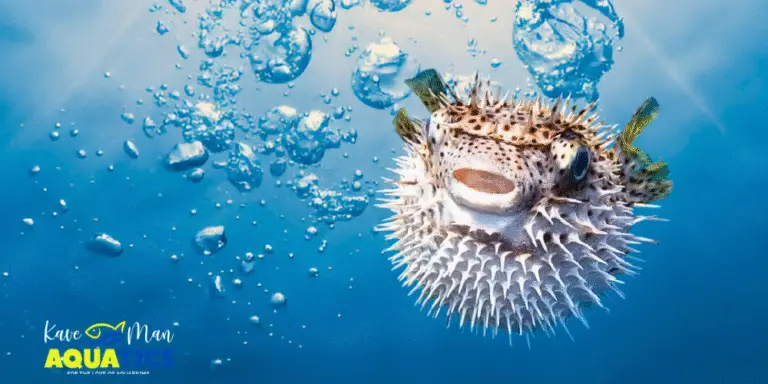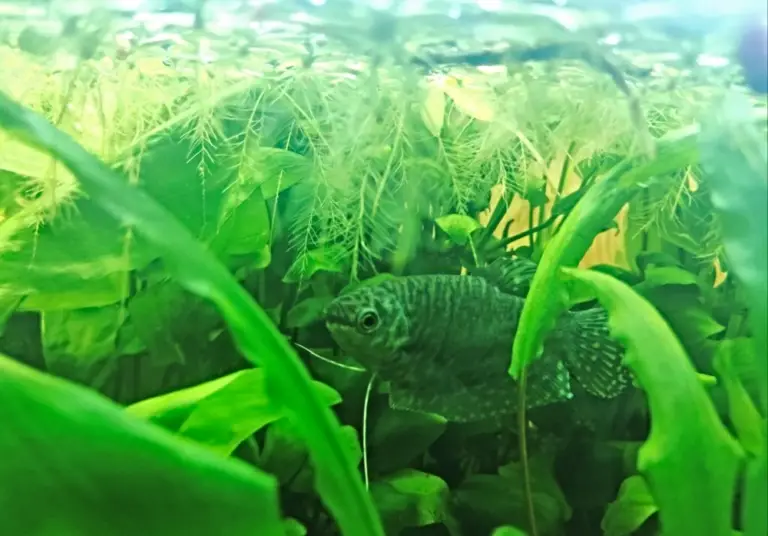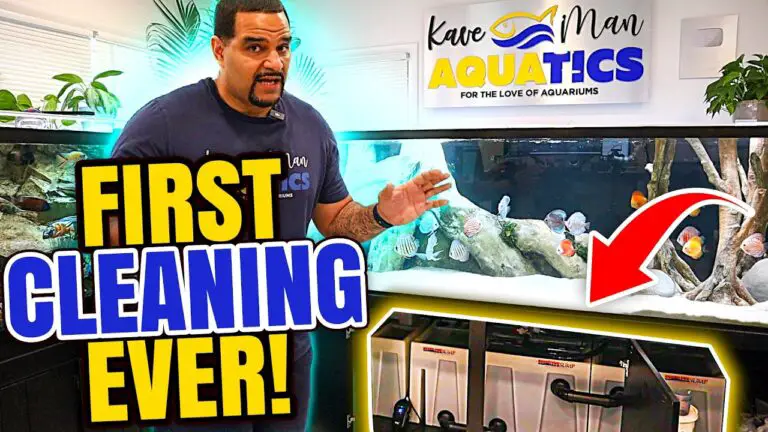Chemical Media 101 — A Complete Guide for Fishkeepers
If you’re new to this aquatic hobby, you’ve probably realized that maintaining a healthy and thriving fish tank involves a bit more than just filling it with water and adding some fish. The key to success in fishkeeping lies in mastering the art of water quality management, and a vital tool in achieving this is chemical media.
In this blog, titled we’ll learn more about aquarium chemical filtration and its profound impact on your aquarium’s well-being. Whether you’re a beginner eager to learn the basics or a seasoned aquarist looking to refine your techniques, we’ve got you covered. Throughout this guide, we’ll provide you with the knowledge and insights you need to create a thriving underwater world for your aquatic companions.
What Is Chemical Media?
Chemical media is a collective term for specialized substances used in aquariums to enhance water quality. It is a type of filter media that can take various forms, including activated carbon, zeolite, and ion exchange resins. Think of them as the invisible janitors of your underwater domain, working ceaselessly to keep your finned friends’ habitat pristine.
As you embark on your fishkeeping journey, you’ll quickly learn that maintaining a clean and healthy aquatic environment is crucial. This is where chemical media comes into play in your aquarium filtration system. While mechanical filtration — like sponges or filters — removes visible debris, chemical media takes on unseen threats.
The primary mission of chemical media is crystal clear — to eliminate impurities and toxins from your aquarium water. This includes substances like ammonia, nitrite, heavy metals, and other undesirable compounds. By absorbing or neutralizing these elements, chemical media ensures a safe and thriving aquatic environment, shielding your fish from potential harm.
Types of Chemical Media
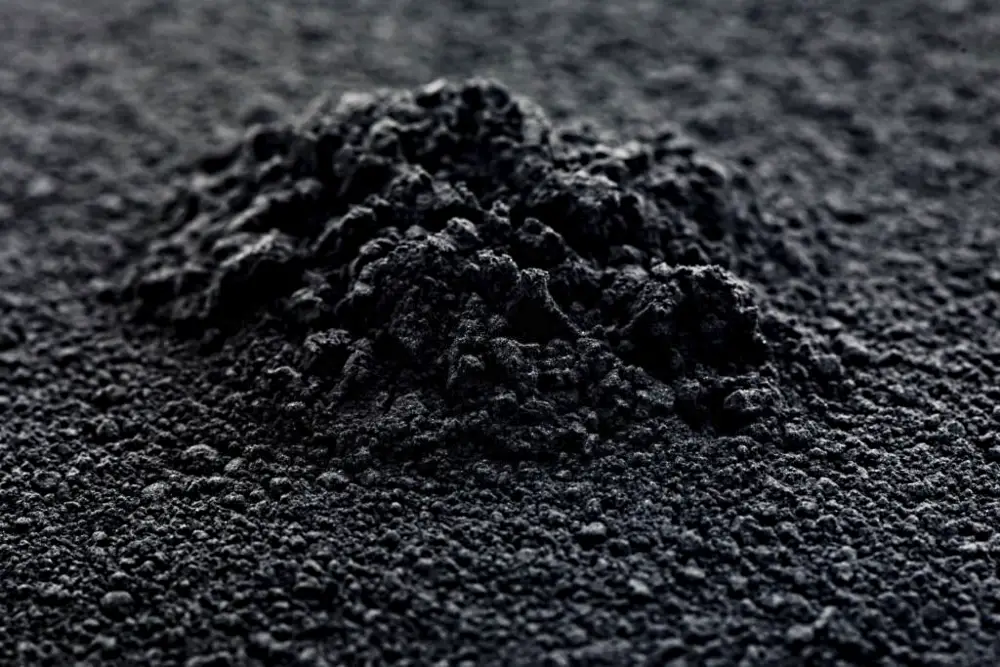
Now that we’ve introduced you to the world of chemical media, let’s dive deeper into the pool and explore the different types at your disposal:
- Activated carbon: Think of activated carbon as the superhero of chemical media. It excels at removing impurities like odors, discoloration, and harmful chemicals such as chlorine and medications. This makes your water clearer and safer for your fish.
- Zeolite: Zeolite is fantastic at tackling ammonia, a notorious fish-killer. It acts like a sponge, soaking up ammonia and keeping your aquarium’s nitrogen cycle in check. Perfect for new tanks or situations where ammonia spikes are a concern.
- Ion exchange resins: These resins are your water softeners. They help remove hardness ions like calcium and magnesium, which can be problematic for some fish species or plants. Ideal for creating a more specific water chemistry.
- Phosphate removers: If algae outbreaks are your nemesis, phosphate removers are your allies. They reduce phosphate levels, curbing algae growth and helping maintain crystal-clear water.
- Ammonia neutralizers: When ammonia spikes threaten your fish’s health, ammonia neutralizers come to the rescue. They swiftly convert ammonia into a less harmful form, buying you time to address the root cause.
Each type of chemical media has its unique superpower. Depending on your aquarium’s needs and your fish’s preferences, you can select the one that suits you best.
Pros and Cons of Chemical Media
Let’s take a balanced look at the advantages and disadvantages of using chemical media in your aquarium.
Pros
- Improved water clarity: Chemical media can work wonders in removing impurities, resulting in crystal-clear water that showcases your fish’s vibrant colors.
- Toxin removal: It’s a reliable ally in neutralizing harmful substances like ammonia and heavy metals, creating a safer environment for your fish.
- Customizable solutions: With various types available, you can tailor your chemical media to address specific water quality issues, from algae control to pH stabilization.
- Compatibility: Chemical media can complement other filtration methods, creating a well-rounded approach to maintaining pristine water.
Cons
- Ongoing costs: Chemical media isn’t a one-time expense. Regular replacement or recharging can add to your long-term aquarium maintenance costs.
- Potential overuse: Incorrect or excessive use of chemical media can lead to rapid changes in water parameters, causing stress to your fish. It’s essential to follow guidelines and monitor your aquarium closely.
- Limited lifespan: Chemical media eventually becomes exhausted and loses its effectiveness. Regular monitoring and replacement are necessary to ensure it continues to work correctly.
- Maintenance intensity: Chemical media requires regular attention and maintenance. Rinse, replace, or recharge it as needed to ensure it functions optimally.
In the end, it can be a valuable tool in your fishkeeping arsenal, helping you achieve and maintain excellent water quality. Just remember to use it wisely, monitor your aquarium, and enjoy the benefits while being mindful of the potential drawbacks.
How Chemical Media Works
Alright, fish-keeping newcomers, let’s dive into how chemical media does its magic in your aquarium’s filtration system. It may sound a bit like science fiction, but it’s all science fact:
- Adsorption: First up is adsorption — not absorption, mind you. Imagine chemical media as a microscopic, incredibly porous sponge. It attracts and traps impurities on its surface like a magnet. For instance, activated carbon is like a sponge for organic molecules, grabbing onto them and preventing them from floating freely in your water. This clears up your water while making it safer for your fish.
- Ion exchange: Think of ion exchange as a friendly trade. Chemical media has a preference for certain ions, like sodium or potassium. When water flows over it, these ions are swapped for other less desirable ones in the water, such as calcium or magnesium. This can help soften your water and create an environment that’s just right for your aquatic friends.
- Chemical reactions: Sometimes, chemical media works its magic through, well, chemical reactions. Take ammonia neutralizers, for instance. They chemically transform toxic ammonia into a safer substance, ammonium. It’s like turning a villain into a harmless sidekick in your aquarium.
In the real world, these processes happen quietly behind the scenes, ensuring your fish swim in a clean and safe environment. So, don’t be surprised when you see your water become clearer, your pH stabilizes, or your ammonia levels drop after introducing chemical media. It’s all part of the grand plan to keep your fish happy and healthy!
Choosing the Right Chemical Media
Now it’s time to address a crucial question — how do you choose the perfect chemical media for your aquarium? Here are some essential considerations to keep in mind:
- Tank size: The size of your aquarium matters. Larger tanks require more chemical media to effectively maintain water quality. Ensure you use the appropriate amount to cover your tank’s needs adequately.
- Water parameters: Different fish and plants thrive in varying water conditions. Check your aquarium’s pH, hardness, and temperature, and choose chemical media that complements these parameters. For example, ion exchange resins can help adjust water hardness to suit your aquatic inhabitants.
- Types of fish and plants: The species you keep play a significant role in selecting chemical media. Some fish are more sensitive to water impurities than others. Research the specific requirements of your fish and plants and tailor your choice accordingly.
- Specific filtration needs: Identify the unique challenges your aquarium faces. Are you battling algae growth, ammonia spikes, or foul odors? Choose chemical media that directly address these issues, such as phosphate removers for algae control or ammonia neutralizers for addressing high ammonia levels.
Here are some additional tips for making the best choice:
- Consult with experienced fishkeepers or your local aquarium store for recommendations.
- Read product labels carefully to understand the intended use and capabilities of the chemical media.
- Don’t hesitate to experiment, but make changes gradually to prevent sudden shifts in water chemistry.
- Keep an eye on your aquarium’s water parameters and your fish’s behavior. Adjust your choice of chemical media as needed to maintain optimal conditions.
By considering these factors and following these tips, you’ll be well on your way to selecting the ideal chemical media that will help your aquarium flourish.
Installing and Using Chemical Media
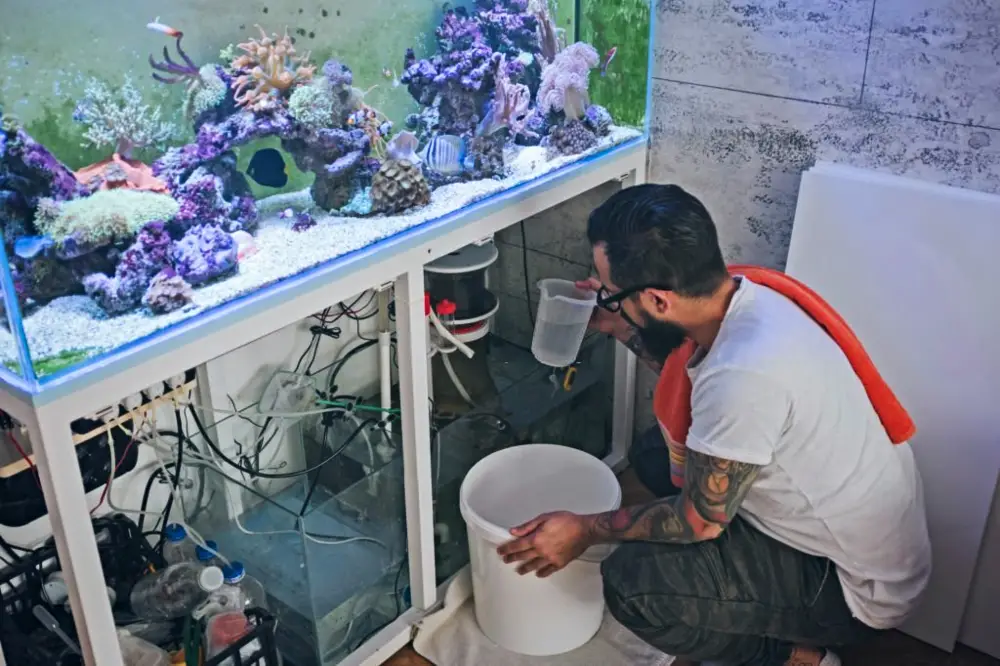
Alright, you’ve chosen the perfect chemical media for your aquarium, and now it’s time to put it to work. Here’s a step-by-step guide on how to install and use chemical media effectively:
- Choose the right location: Start by deciding where to place your chemical media. Most aquarium filters have designated compartments or chambers for chemical media. Consult your filter’s instructions to locate the appropriate slot.
- Rinse the media: Before introducing it to your tank, rinse the chemical media thoroughly with dechlorinated water. This step removes any dust or residue that might cloud your water when it’s first added.
- Place the media: Carefully add the rinsed chemical media to its designated filter compartment. Make sure it’s evenly distributed to allow water to flow through it effectively.
- Monitor the flow: Keep an eye on the water flow rate through the chemical media. It’s essential that water flows through it at a steady pace to ensure optimal contact and filtration. Adjust your filter if necessary.
- Maintenance: Chemical media is not a “set it and forget it” solution. Regular maintenance is crucial. Check the manufacturer’s guidelines for recommended replacement intervals. Typically, you’ll need to replace chemical media every few weeks to months, depending on the type and specific conditions in your aquarium.
- Observe your aquarium: Pay close attention to any changes in your aquarium’s water quality, such as clarity and chemical parameters. If you notice any issues, it may be time to replace or replenish your chemical media.
By following these steps and staying vigilant about maintenance, you’ll ensure that your chemical media continues to work its magic in maintaining a healthy and vibrant aquarium environment. Now, sit back, relax, and watch as your fish enjoy their crystal-clear haven!
Troubleshooting Common Issues
In the world of fishkeeping, even with the best intentions, hiccups can happen. Let’s explore some common challenges related to chemical media and how to troubleshoot them:
- Cloudy water: If your aquarium water suddenly becomes cloudy after introducing chemical media, don’t panic. This cloudiness might be due to particles that the chemical media is removing. Give it some time — it usually settles within a day or two. Ensure that you rinsed the media thoroughly before use, and check your water flow rate to prevent any clogs.
- Algae outbreaks: Sometimes, chemical media alone may not be sufficient to combat persistent algae issues. Consider additional measures like adjusting your lighting schedule, reducing nutrient inputs — like overfeeding — and adding algae-eating invertebrates or fish. Chemical media like phosphate removers can also help prevent algae by reducing phosphate levels.
- Fish health issues: If you notice your fish behaving strangely or showing signs of distress after introducing chemical media, it’s possible that the media is altering water parameters too rapidly. Ensure that you’re using the appropriate type and amount of media for your tank size. Gradual changes are key to minimizing stress on your fish.
- Diminished effectiveness: Over time, chemical media can become exhausted and less effective at removing impurities. If you notice a decline in water quality, test your media’s lifespan and replace it according to the manufacturer’s recommendations.
- Smell issues: If your aquarium has a foul odor despite using chemical media, it might be time to replace or recharge it. Some media, like activated carbon, can be recharged by rinsing it and allowing it to dry thoroughly before reuse.
Remember, fishkeeping is a learning journey, and troubleshooting is part of the process. Don’t be discouraged by these common challenges. With a bit of patience, observation, and adjustment, you can maintain a healthy and thriving aquarium environment with the help of your trusty chemical media.
Advanced Tips and Best Practices
For those fishkeepers who have mastered the basics of chemical media, here are some advanced tips and best practices to elevate your aquarium maintenance game:
- Combine multiple media types: To address a range of water quality issues, consider using a combination of chemical media types in your filter. For instance, combining activated carbon for removing impurities with zeolite for ammonia control can create a powerful filtration duo.
- Pre-condition your media: Before introducing chemical media to your aquarium, pre-condition it by soaking it in dechlorinated water overnight. This step helps prepare the media and ensures it’s ready to start working immediately.
- Create a chemical media chamber: If your filter allows, consider dedicating a specific compartment or chamber solely for chemical media. This ensures efficient contact time between the water and the media, maximizing its effectiveness.
- Monitor water parameters: Invest in quality water testing kits to regularly check water parameters like pH, ammonia, nitrite, and nitrate. By keeping a close eye on these parameters, you can make timely adjustments to your chemical media or other filtration methods as needed.
- Maintain consistency: Consistency is key in fishkeeping. Stick to a regular maintenance schedule, including media replacement or recharging, water changes, and equipment cleaning. A well-maintained system is less likely to encounter water quality issues.
- Adjust flow rates: Depending on the type of chemical media you’re using, adjusting the flow rate through your filter can enhance its efficiency. Some media may work better with slower flow rates, so experiment to find the optimal balance.
By incorporating these advanced tips and best practices into your fishkeeping routine, you can further optimize your aquarium’s chemical filtration and ensure your fish enjoy the cleanest and healthiest water possible. Remember, a little extra effort can make a world of difference in creating a thriving aquatic habitat.
Unlock the Secrets of Pristine Aquariums With Chemical Media
Throughout the blog, we’ve uncovered the fundamental role of chemical media in maintaining optimal water quality for your finned companions. We’ve explored the various types of chemical media — from activated carbon to zeolite — and how they effectively remove impurities and toxins. You’ve discovered the science behind it all — from adsorption to ion exchange — and seen how these processes keep your water crystal clear.
We’ve guided you through selecting the right chemical media for your unique aquarium, installing it correctly, and troubleshooting common issues. Now, it’s your turn to take the reins and implement these valuable insights into your own aquarium. Transform your aquatic paradise into a haven of health and vitality for your beloved fish.
If you’re hungry for more knowledge, consider reaching out to KaveMan Aquatics for personalized 1-on-1 coaching.
-
Chemical Media 101 — A Complete Guide for Fishkeepers
Dive into aquarium care with our chemical media 101 guide! Learn the secrets of chemical media for pristine aquariums and more!


